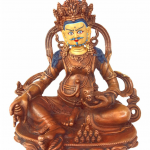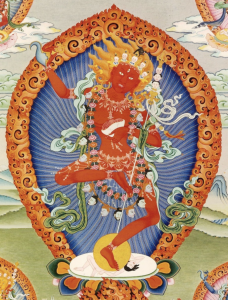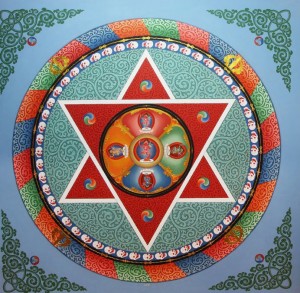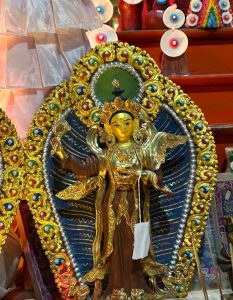Ayang Rinpoche’s monastery in South India, Thupten Shedrub Jangchub Ling, will hold their annual Dzambhala, or Wealth Deity Offering Prayer, December 20-26, 2025.
Dzambhala is an emanation of Buddha Ratnasambhava, whose enlightened activity is increasing and whose essence is generosity. Dzambhala is an emanation of Buddha Ratnasambhava, whose enlightened activity is increasing and whose essence is generosity. He is portrayed riding a snow lion and holding victory banner and a jewel-spitting mongoose. Some view the mongoose as triumphant over snakes or nagas, the keepers of wealth.
The offering prayer is also referred to as a Yangdrup, meaning a ritual to generate “Yang”, the powerful magnetizing properties associated with fortune and luck. This in turn creates all opportunities to ensure accomplishment in spiritual practice, as well as an abundance of wealth, prosperity, success, good fortune, luck, long life and wisdom in a person’s personal, business and family life.
People who wish to dedicate prayers for their loved ones, including pets, living or passed, may donate towards tormas, butter lamps, tsog, tea, meals, offerings for monks and nuns, or other puja expenses, by sending in their contributions through Amitabha Foundation in their own country, directly to the monastery’s account, or by donating online. Donations are tax-deductible in the US









